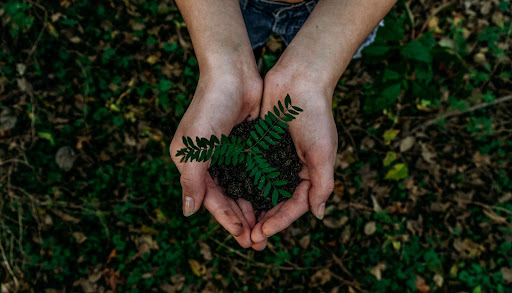The first thing most of us were taught as kids about going green was to reduce, reuse, and recycle. These timeless truths still apply today. Going green can save you money, and conserving energy and resources is a great way to reduce your monthly expenses and be kind to the environment.
But what if you’re on a tight budget? Is it still possible to go green and save money? Absolutely! Here are a few tips and tricks to help you out without having to make any major changes in your life.

1. Use LED Light Bulbs
There are many advantages to using LED light bulbs. First, they’re more energy efficient than traditional incandescent bulbs – they use 85% less electricity than traditional lighting and roughly 18% less electricity than CFL. Although they might be a bit more expensive than traditional incandescent bulbs, they last up to 25 times longer. That means you’ll save money in the long run by making the switch.
In addition, LED bulbs are more environmentally friendly because they don’t contain any harmful chemicals like mercury. They are also completely recyclable, so you can feel good about doing your part for the environment when you switch to LED bulbs. Whether you’re looking to save money or be more eco-friendly, LED light bulbs are a great choice and a win-win – for your wallet and planet.
2. Invest In Reusable Products
You may not realize it, but every time you use a disposable cup, straw, or shopping bag, you’re damaging the environment. These items are made from petroleum-based plastics that take centuries to break down, and they often end up in landfills or as litter. Not only is this harmful to wildlife and ecosystems, but it also takes up valuable space that could be used for other purposes.
Reusable products are often seen as more expensive than their disposable counterparts. But since you don’t have to replace them constantly, it will give you some nice savings over time. Reusable water bottles, for example, can save you money on your water bill, while reusable shopping bags can save you money on your grocery bill. And, they’re also often sturdier than their disposable counterparts.
3. Line Dry Your Clothes
Line drying your clothes may seem like a pain, but it’s actually an easy way to save money on your electricity bill and be more eco-friendly. It’s also gentle on your clothes, helping them to last longer and helps to reduce air pollution and save water.
And when you line dry, you cut down on using dryer sheets which are bad for your wallet, the environment, and your health. The microplastics in dryer sheets harm you and the environment, and they clog your lint trap. If you must dry, use wool dryer balls that contain no dangerous chemicals.

4. Compost Kitchen Scraps
When it comes to being eco-friendly and saving money, few things are as simple and effective as composting your kitchen scraps. Composting is a natural process that recycles organic matter back into the soil. By composting, you can provide your plants with nutrient-rich soil, reduce your reliance on chemical fertilizers, and save money on disposal costs. Plus, it helps sequester carbon dioxide, a major greenhouse gas.
So rather than throwing away fruit and vegetable scraps, add them to your compost pile (or bin). Coffee grounds, eggshells, and even leaves can be added to compost. Just be sure to check with your local municipality for specific guidelines on what can (and cannot) be added to compost.
5. Install a programmable thermostat
Programmable thermostats are a great way to save money on your energy bill and be more eco-friendly. You can save money on your energy bill by programming the thermostat to lower the temperature when you’re not home automatically. However, there are a few things to keep in mind when choosing a programmable thermostat.
- First, make sure it’s compatible with your heating and cooling system.
- Second, choose a model that allows you to program different temperatures for different times of the day. That way, you can save even more money on your energy bill.
- Finally, make sure the thermostat is easy to use. After all, there’s no point in having a programmable thermostat if you’re not going to use it because it’s too complicated.
Be A Force For Green
Going green doesn’t have to be expensive or time-consuming. There are plenty of easy ways to save money and reduce your impact on the environment. If we all made small changes in our everyday lives to reduce our environmental impact, think of how much good we could do for our planet!
We’ve highlighted some of our favorite easy tips that will make it easy for you to reduce your environmental impact without making big changes to your lifestyle. So what are you waiting for? Put these tips into action today and start saving!

